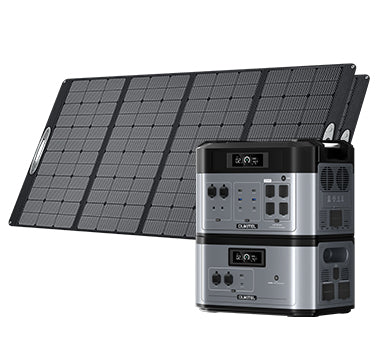Portable Power Stations for Outdoor Events: Powering Your Festivals and Gatherings
Navigation
- Introduction
- Choosing the right generator
- Setting up solar panels
- Tips to maximize your portable power station's runtime and minimize hassle
- Write to the end

Introduction
Outdoor gatherings of all sizes seem to be more popular than ever. Whether it's festivals, camping trips or just a party in the park, people want to connect with each other and enjoy good times under the sun.
But the devices and electronics we rely on daily need power too! Charging phones, using speakers and lighting up the night often require outlets - even when miles from the grid.
Luckily, portable power stations offer an easy solution. These rechargeable generators provide power precisely when and where you need it most. From solar-powered units you can take anywhere to heavy-duty models for multi-day festivals, the right portable power station can keep the juice flowing so your event can thrive.
Choosing the right generator
The first step to powering your event is choosing the right generator for your needs. Start by figuring out the total watt hours required based on all the devices you plan to power. Add up the watts used by things like:
- Phones and tablets
- Speakers
- String lights
- Coolers
- Medical equipment
- Security cameras
Factor in generator size, weight and portability. If you need to transport the unit, heavier models with huge capacities become impractical. Consider a balance of power and practicality.
Next decide between solar-rechargeable or battery-operated units. Solar is sustainable but needs sunny weather for high efficiency charging. Batteries are convenient but still need power to recharge. Each option has pros and cons for different events.
Think long term - can the generator cover the full duration of your gathering? This usually requires a unit at least 2-3 times more powerful than the total wattage of devices you plan to run. More capacity ensures you'll have juice to spare.
No matter what type you choose, start on the higher side of your budget to ensure your generator doesn't become the bottleneck holding back your event. A reputable brand that's built to last will prove its worth the first time you don't have to scramble for power.
Remember - portable power stations truly allow events to scale up without limits. So don't be afraid to size up and add extra capacity for growth. You can always downsize in the future, but there's no "upsizing" a generator mid-event! Pick one that can grow with you.
With the right information and a budget that fits your needs, choosing a power station that covers your whole event becomes a no-brainer.
Setting up solar panels
Solar panels can keep your power station charged and running continually for the duration of your event - providing power that never runs out.
The simplest setup uses panels mounted to the generator itself. But for bigger events, you'll likely need additional panels. Consider trailers, tables, and ground stakes to hold more panels in optimal positions.
Proper angle and orientation is key. Generally you'll want panels tilted between 20 and 40 degrees from horizontal, pointing directly at the sun. Adjust angles throughout the day to maximize exposure. Some portable panel racks even allow easy re-positioning as the sun moves.
Start by estimating how many solar watts you need based on:
- Your power station's charge rate
- The sunlight available (full sun vs partial shade)
- The number of cloudy versus sunny days
Then add 20-50% excess capacity to account for imperfect conditions. Having too many solar watts ensures your panels will reliably keep up with power demands all day, every day.
If possible, set up and test your solar configuration before the big event. This allows you to troubleshoot any wiring issues, confirm charge rates match expectations and optimize panel positions for the location.
Tips to maximize your portable power station's runtime and minimize hassle
- Connect speakers last: Save connections for audio equipment until other devices are plugged in. Speakers can quickly drain power, so connecting them later extends how long music can play.
- Test everything beforehand: Run through the full power-up sequence and plug in all devices well before the big day. This finds any issues that still have time to troubleshoot.
- Backup battery packs: Keep extra charged battery packs on-hand that can jump in and provide surge power when needed. Swapping out drained packs extends total runtime.
- Run multiple power stations: For huge events, connect several generators together using power distribution cables. This spreads the load across stations for less strain on any single unit.
- Protect from weather: Cover units during extreme weather like downpours or high winds. While portable stations are rugged, protecting them keeps everything running smoothly during less than ideal conditions. More information on: Can Portable Generators Get Wet? Tips to Keep Your Generator Dry
Write to the end
After powering your first successful event, pay it forward by sharing your journey - the good, the bad and the lessons learned - with another organizer just getting started. Your story may provide the exact knowledge they need to power their own vision into reality. As we pass the torch of wisdom from one event to the next, solutions truly begin to scale.







































 Oukitel Flashlight
Oukitel Flashlight Oukitel Solar
Extension Cable
Oukitel Solar
Extension Cable

















Leave a comment